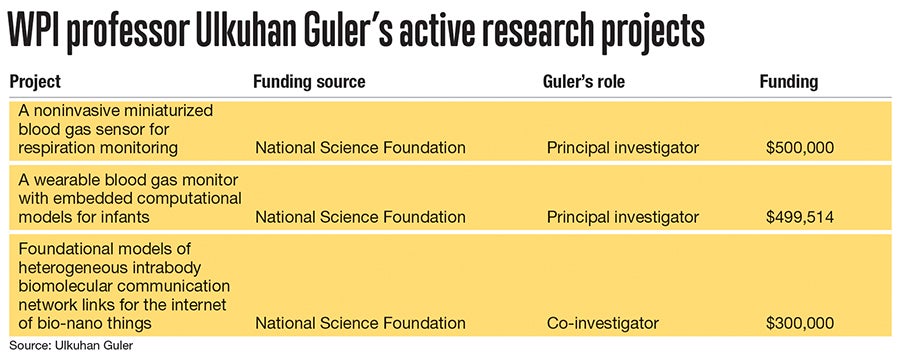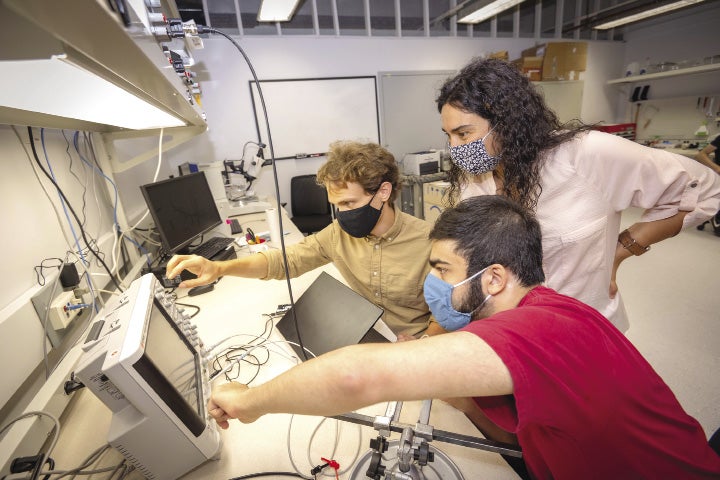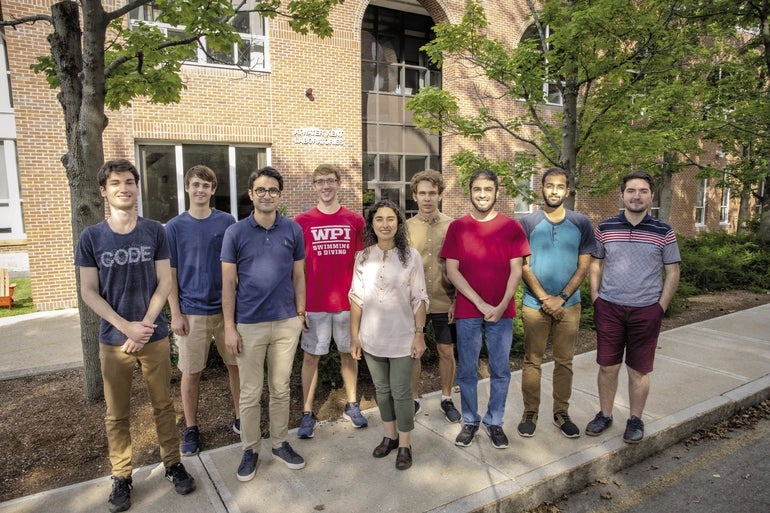Worcester Polytechnic Institute’s Integrated Circuits and System Lab and its director, Ulkuhan Guler, are probing the leading edge of new means to enhance medical care and wellness through microelectronics.
Get Instant Access to This Article
Subscribe to Worcester Business Journal and get immediate access to all of our subscriber-only content and much more.
- Critical Central Massachusetts business news updated daily.
- Immediate access to all subscriber-only content on our website.
- Bi-weekly print or digital editions of our award-winning publication.
- Special bonus issues like the WBJ Book of Lists.
- Exclusive ticket prize draws for our in-person events.
Click here to purchase a paywall bypass link for this article.
Worcester Polytechnic Institute’s Integrated Circuits and System Lab and its director, Ulkuhan Guler, are probing the leading edge of new means to enhance medical care and wellness through microelectronics.
Most recently, she and her team developed a wireless blood oxygen detector targeted at neonatal care. For Guler, whose son was born premature and faced a lengthy hospitalization, it’s personal. Making hospital-grade instrumentation to travel unobtrusively with a child could permit at-home monitoring, reducing hospital stays.
Babies are healthier when they can be with their own family, Guler said. So, the goal of her device is to give doctors the flexibility to monitor a patient with equal fidelity, whether they are in a hospital or at home.
And it’s not just infants. Adults with asthma or COPD can easily end up hospitalized if they or their caregivers are not alerted to decreasing lung function, something that accurate oxygen monitoring can help to identify.
“Although our O2 sensor can be also used by adults, we chose the population of babies, as they are the most vulnerable population. Moreover, the chair of the pediatrics department at [UMass Medical School] is interested in our project and willing to test our prototype at his clinic,” said Guler.
That’s Dr. Lawrence Rhein, chair of the Department of Pediatrics at UMass Chan Medical School in Worcester. In fact, the work they did together was presented at the 2019 Biomedical Circuits and Systems Conference in Nara, Japan.
“We have applied for a patent on this device,” said Guler. “In the future, we would like to see this device be equally useful for babies and adults who have respiratory problems.”
In parallel with O2 work, Guler said she began to work on carbon dioxide sensing.
“My recent National Science Foundation career award actually supports mostly the CO2 project,” she said.
That work has involved one of Guler’s industry partners, Wilmington-based Analog Devices Inc., a company specializing in chip technology for more than half a century. Foroohar Foroozan, senior manager, algorithms for biomedical systems at the company, said she has known Guler since first visiting her WPI lab in 2019 and 2020.
ADI provides sensors and analog front ends and platforms as well as software support.
“This has helped Dr. Guler’s students to design a wearable device to measure partial pressure of oxygen and carbon dioxide non-invasively,” Foroozan said.
ADI is investing in Guler’s lab as part of its university programs. ADI engineers and Guler’s students have regular meetings to collaborate in this area, she said.

A long history
Prior to her arrival at WPI in 2018, Guler had already begun to make a mark in the field. Her postdoctoral work on tissue impedance research targeted a neural interface application.
“When electro-needles are inserted into the brain tissue, if the tissue-electrode contact is weak, the recorded data is junk,” she said. “So, before we start to collect data, we check the electrode-tissue impedance, and if the electrode has a good contact, we collect the brain data.”
Guler said she did not continue that project at WPI, mainly because the oxygen and carbon dioxide projects require so much time.
“I want to continue to contribute to the development of devices to enhance our understanding of biophysical processes and contribute to the diagnosis of numerous diseases,” Guler said.
As a result, she said she is interested in developing technologies to measure meaningful parameters, such as biomarkers or physiological parameters, from inside and outside of the human body with next-generation miniaturized wireless devices. These are usually in the form of wearable and implantable devices.
Teacher, too
Guler is a researcher but also focuses on developing the abilities of her students. Ian Costanzo, a 2022 graduate of WPI and now an analog design engineer at tech giant Intel, said Guler’s coursework and research are rigorous, but the work helps prepare students for the realities of the fast-paced and technically challenging semiconductor industry.
“She pushes students to achieve their potential; she asks her students to target high but achievable goals and works closely with them so they can succeed,” he said.
Costanzo said Guler’s curriculum is strongly rooted in WPI’s guiding principles, theory, and practice.
In other words, you need to understand the math and physics behind how a system works, but you have to undergo the challenge of designing that system and proving that it works in the real world.
“There is a long journey between equations in a notebook and a real circuit on the lab bench, and Professor Guler’s students develop expertise on every step of that road,” said Costanzo.

Achievable medical goals
Microelectronics are the heart and brains of medical devices, said Costanzo.
As the world enters the smart-and-connected health era, novel and specialized circuits will be critical to improving the quality of patient care.
“These circuits need to be low power to enable more comfortable and liberating wearable devices,” he said.
They need to be robust to ensure healthcare providers get the highest quality information to help treat their patients.
“Professor Guler’s research is helping miniaturize traditionally bulky and power-hungry respiration monitors into compact and comfortable wearables,” said Costanzo.
This technology could have a very real impact for a wide range of patients from premature neonates with developing lungs to adults with COPD,” he said.
“A wearable device that can continuously monitor blood gases and securely transmit data to clinical experts would enable safer and more effective treatment of respiratory diseases in a home environment,” Foroozan said.
CORRECTION: A chart in a previous version of this story incorrectly said Ulkuhan Guler had 12 active research projects. The correct number is three.

